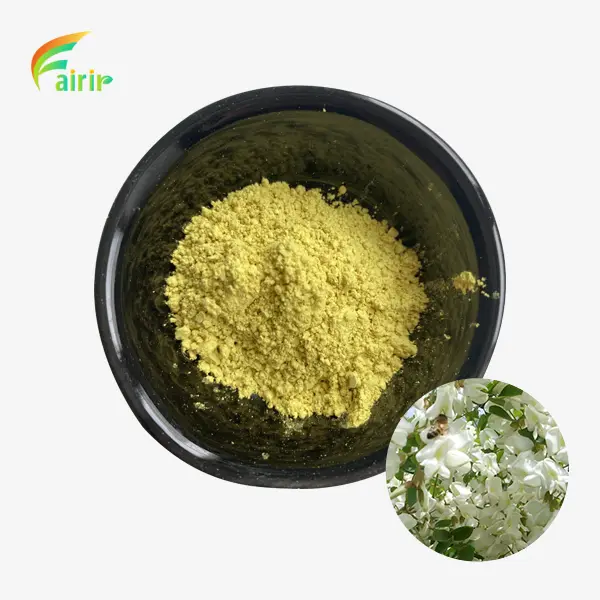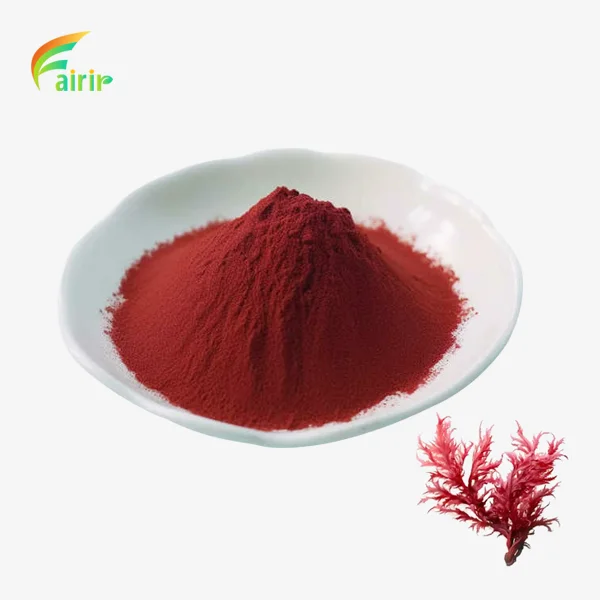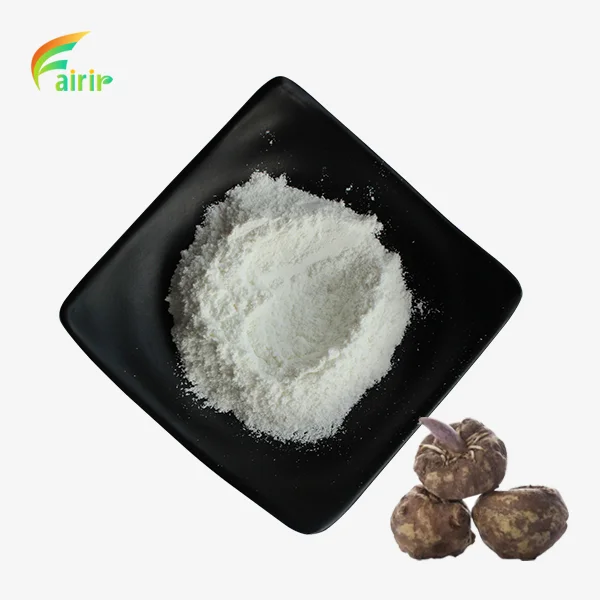How to integrate Beta-Arbutin Powder into serums and creams?
Beta-Arbutin Powder has emerged as a game-changing ingredient in the skincare industry, known for its remarkable skin-lightening and brightening properties. As more consumers seek effective solutions for hyperpigmentation and uneven skin tone, formulators are increasingly turning to this powerful compound. Integrating Beta-Arbutin Powder into serums and creams requires careful consideration of factors such as pH levels, stability, and compatibility with other ingredients. This blog post will explore the best practices for incorporating Beta-Arbutin Powder into various skincare formulations, ensuring optimal efficacy and product performance. We'll delve into the science behind this innovative ingredient, discuss ideal concentrations, and provide practical tips for creating stable and effective skincare products that harness the full potential of Beta-Arbutin Powder.

What are the optimal concentrations of Beta-Arbutin Powder in skincare formulations?
Understanding Beta-Arbutin Powder's potency
It is well known that Beta-Arbutin Powder can lighten the skin, which makes it a common ingredient in many skin care products. It's important to think about how potent and effective Beta-Arbutin Powder is when figuring out the best amounts. In most cases, concentrations between 1% and 2% have been found to have major effects in clinical tests. However, it's important to note that the effectiveness of Beta-Arbutin Powder can vary depending on the individual's skin type and the specific formulation. Some studies have demonstrated that higher concentrations, up to 7%, may yield more dramatic results, but this should be approached with caution to avoid potential skin irritation. Formulators must carefully balance the concentration of Beta-Arbutin Powder with other active ingredients to create a synergistic effect without compromising skin health.
Factors influencing Beta-Arbutin Powder concentration
Several factors come into play when determining the ideal concentration of Beta-Arbutin Powder in skincare products. The pH of the formulation is a critical consideration, as Beta-Arbutin Powder is most stable and effective in slightly acidic environments, typically between pH 4 and 6. Additionally, the presence of other active ingredients can influence the optimal concentration of Beta-Arbutin Powder. For instance, when combined with vitamin C or niacinamide, lower concentrations of Beta-Arbutin Powder may be sufficient due to the synergistic effects. The intended use of the product, whether it's a daily moisturizer or an intensive treatment serum, also plays a role in determining the appropriate concentration. When formulators add Beta-Arbutin Powder to their mixes, they need to think about the texture, absorption rate, and general safety of the product.
Regulatory considerations for Beta-Arbutin Powder usage
When adding Beta-Arbutin Powder to skin care products, it's important to know the rules and regulations set by the government. Different regions may have varying limits on the maximum allowable concentration of Beta-Arbutin Powder in cosmetic products. For example, the European Union has set a maximum concentration of 2% for leave-on products and 7% for rinse-off products. In the United States, while there are no specific regulations for Beta-Arbutin Powder, it's generally recognized as safe when used at appropriate concentrations. Formulators have to keep up with the latest rules and regulations and make sure their goods meet both local and foreign standards. When Beta-Arbutin Powder is added, it's also important to do full stability and safety tests to make sure the product stays safe and effective throughout its shelf life.
How does Beta-Arbutin Powder interact with other skincare ingredients?
Synergistic combinations with Beta-Arbutin Powder
Beta-Arbutin Powder can work synergistically with various skincare ingredients to enhance its skin-lightening and brightening effects. One notable combination is Beta-Arbutin Powder with vitamin C, as both ingredients target different aspects of melanin production. While Beta-Arbutin Powder inhibits tyrosinase activity, vitamin C helps to reduce oxidized melanin. Using this two-step method can help get better results in treating acne. Beta-Arbutin Powder and niacinamide are also good together because they can help the skin's barrier work and get more Beta-Arbutin Powder to the cells it needs to reach. Hyaluronic acid can also work well with Beta-Arbutin Powder because it helps keep the skin moist and may help the active ingredients get deeper into the skin.

Potential Incompatibilities with Beta-Arbutin Powder
While Beta-Arbutin Powder is generally stable and compatible with many ingredients, there are some potential incompatibilities to consider. Formulations with high pH levels can make Beta-Arbutin Powder less stable, which makes it less effective. Because of this, Beta-Arbutin Powder should not be mixed with products or formulas that are very alkaline. Beta-Arbutin Powder may not work as well when mixed with enzymes or other ingredients that can break it down, according to some studies. Additionally, while not necessarily incompatible, using Beta-Arbutin Powder alongside other potent skin-lightening agents like hydroquinone or kojic acid should be approached with caution to avoid over-lightening or skin irritation. Formulators must carefully consider the overall composition of their products to ensure optimal stability and efficacy of Beta-Arbutin Powder.
Formulation Strategies for Beta-Arbutin Powder
When integrating Beta-Arbutin Powder into skincare formulations, several strategies can be employed to maximize its effectiveness. One approach is to create a multi-layered system where Beta-Arbutin Powder is encapsulated or incorporated into liposomes to enhance its stability and delivery to the skin. This can help keep the Beta-Arbutin Powder from breaking down and make sure that the flow is more controlled. Another strategy is to formulate products with a slightly acidic pH to maintain the stability of Beta-Arbutin Powder. Including antioxidants in the formulation can also help protect Beta-Arbutin Powder from oxidation and extend its shelf life. When combining Beta-Arbutin Powder with other active ingredients, it's crucial to conduct thorough compatibility testing and stability studies to ensure the formulation remains effective throughout its intended use period.
What are the best practices for formulating stable products with Beta-Arbutin Powder?
PH considerations for Beta-Arbutin Powder stability
Maintaining the appropriate pH is crucial when formulating products with Beta-Arbutin Powder. The optimal pH range for Beta-Arbutin Powder stability is typically between 4 and 6, with some studies suggesting that a pH of around 5 is ideal. At this slightly acidic pH, Beta-Arbutin Powder remains stable and effective, minimizing the risk of degradation or loss of potency. Formulators should carefully select pH-adjusting agents and buffer systems that are compatible with Beta-Arbutin Powder and other ingredients in the formulation. It's also important to consider the impact of pH on the overall product performance, including texture, sensory attributes, and skin compatibility. Regular pH monitoring during the product development process and throughout the product's shelf life is essential to ensure consistent stability and efficacy of Beta-Arbutin Powder in the final formulation.
Packaging and storage considerations for Beta-Arbutin Powder products
Proper packaging and storage are essential for maintaining the stability and efficacy of products containing Beta-Arbutin Powder. Opaque or dark-colored packaging is recommended to protect the formulation from light exposure, which can potentially degrade Beta-Arbutin Powder. Airless pump containers or tubes with small openings can help minimize product exposure to air and potential contaminants. For products with higher concentrations of Beta-Arbutin Powder, consider using packaging materials that are resistant to oxidation and chemical interactions. Storage recommendations should include keeping the product in a cool, dry place away from direct sunlight. Additionally, incorporating appropriate preservatives in the formulation can help extend the shelf life of Beta-Arbutin Powder products and prevent microbial contamination. Clear usage instructions and storage guidelines should be provided to consumers to ensure optimal product performance.
Quality control measures for Beta-Arbutin Powder formulations
Implementing robust quality control measures is crucial when formulating products with Beta-Arbutin Powder. Regular testing of raw materials, including Beta-Arbutin Powder, should be conducted to verify purity and potency. During the formulation process, stability testing under various conditions (e.g., temperature, light exposure) should be performed to assess the product's shelf life and maintain its efficacy. Analytical methods such as HPLC can be used to monitor the concentration of Beta-Arbutin Powder in the final product and detect any potential degradation products. To make sure the product stays free of contamination, microbiological testing is necessary. Also, it's important to make sure that the materials used for packing don't react negatively with the product so that the product stays stable. For regularly making high-quality Beta-Arbutin Powder formulations, it is important to set up a quality control system that covers all stages of production, from getting the raw materials to releasing the finished product.
Conclusion
Integrating Beta-Arbutin Powder into serums and creams requires a thorough understanding of its properties, optimal concentrations, and interactions with other ingredients. By carefully considering factors such as pH stability, synergistic combinations, and potential incompatibilities, formulators can create effective and stable skincare products. Implementing best practices in formulation, packaging, and quality control ensures that the full potential of Beta-Arbutin Powder is harnessed, delivering powerful skin-lightening and brightening effects to consumers. As the demand for advanced skincare solutions continues to grow, mastering the art of formulating with Beta-Arbutin Powder will be crucial for staying competitive in the ever-evolving beauty industry.
Unlock Radiant Skin with Premium Beta-Arbutin Powder Solutions
Shaanxi Fairir Biotech Co., Ltd. is proud to be a leading manufacturer and supplier of high-quality plant extracts, including Beta-Arbutin Powder. Our state-of-the-art facilities and stringent quality control processes ensure that our products meet the highest standards of purity and efficacy. With our extensive experience and commitment to customer satisfaction, we're your ideal partner for all your skin-brightening ingredient needs. Our team of experts is always ready to assist you in integrating Beta-Arbutin Powder into your formulations effectively. For more information or to discuss your specific requirements, please don't hesitate to contact us at sales@fairirbiotech.com. Let us help you create innovative and effective skincare solutions that harness the power of Beta-Arbutin Powder.
References
1. Kim, Y. J., & Uyama, H. (2005). Tyrosinase inhibitors from natural and synthetic sources: structure, inhibition mechanism and perspective for the future. Cellular and Molecular Life Sciences, 62(15), 1707-1723.
2. Sarkar, R., Arora, P., & Garg, K. V. (2013). Cosmeceuticals for hyperpigmentation: What is available? Journal of Cutaneous and Aesthetic Surgery, 6(1), 4-11.
3. Gillbro, J. M., & Olsson, M. J. (2011). The melanogenesis and mechanisms of skin-lightening agents – existing and new approaches. International Journal of Cosmetic Science, 33(3), 210-221.
4. Boo, Y. C. (2019). Arbutin as a skin depigmenting agent with antimelanogenic and antioxidant properties. Antioxidants, 8(9), 403.
5. Thongchai, W., Liawruangrath, B., & Liawruangrath, S. (2007). High-performance liquid chromatographic determination of arbutin in skin-whitening creams and medicinal plant extracts. Journal of Cosmetic Science, 58(1), 35-44.
6. Hu, Z. M., Zhou, Q., Lei, T. C., Ding, S. F., & Xu, S. Z. (2009). Effects of hydroquinone and its glucoside derivatives on melanogenesis and antioxidation: Biosafety as skin whitening agents. Journal of Dermatological Science, 55(3), 179-184.











_1751965378790.webp)